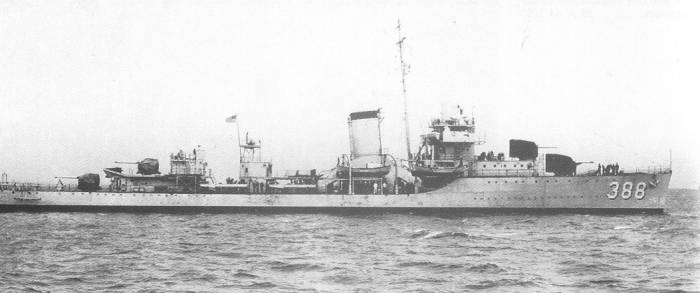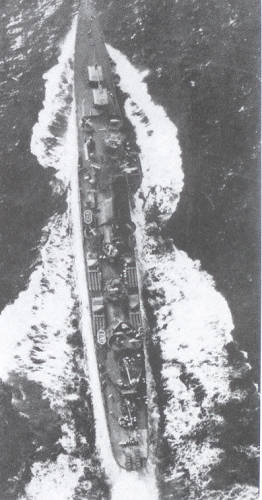

Design History
In FY34, the Navy had been granted two 1,850 ton ships (which became Somers and Warrington) and twelve 1,500 ton ships. Originally contemplating twelve ships of the Dunlap design, the Navy was presented by Bethlehem Steel of Quincy, with a new design of just four guns but sixteen torpedo tubes in quadruple wing-mounts; the design showed one single stack in which the exhausts of both boilers were combined. The propulsion system improved that of the Mahans. The Navy accepted Bethlehem's design for the ships which the yard was to build, which became Gridley and Craven.
The remaining ships for FY34 were not built by Bethlehem; they are described separately in the Bagley description. For FY35, in which twelve ships were ordered, a repeat of the general design of the FY34 Bethlehem design was demanded. However, only two of the ships were awarded to Bethlehem, and although the other yards build the new ships to a design of Gibbs & Cox (described in the Benham description), Bethlehem built its two to the plans of the Gridley class, without modification, completing the class at four ships.
The general layout arrived at four 127mm L/38 guns, the two guns before the bridge in enclosed mounts, the two aft open, with sixteen torpedoes in quadruple wing mounts, two on each side, and no reloads. Four 12.7mm L/90 machine guns made up the anti-air battery. Pole masts had replaced the Mahans' tripod masts.
Service History
During the construction of the Mahan class, the advocates of stronger torpedo armament considered that some thought should be given to increasing the torpedo firepower of U.S. destroyers still more, preferably at the same time moving the torpedo tubes to the main deck. The centerline mounts used in the previous destroyer classes had by necessity (in order for the torpedoes to clear the main deck when fired) been emplaced rather high in the ship, leading to failures upon their impact on the surface; therefore, the main deck emplacement was to be favored.
 Modification History
Modification History
In 1942, the 12.7mm L/90 machine guns were replaced by 20mm guns, and two added alongside the stack. Radar was installed in due course. In 1943, a seventh 20mm gun was placed on the searchlight platform amidships, and later, an eighth before the bridge. Overall poorly suited due to excessive topweight to modifications, the Gridleys paid for each modification with the removal of some previous piece of equipment; since they could not employ 40mm guns, as the danger from Kamikazes grew, they were moved to the Atlantic Fleet.
All ships participated in the early operations of the Pacific Fleet. The class participated in the Fast Carrier Raids, the Midway operations, Guadalcanal invasion and subsequent actions in the Solomons, the invasions in the Gilbert, Marshall and Mariana Islands in 1943/44, the attacks on Formosa and the Leyte Gulf operations, and the invasion of Luzon. With the growing threat of Kamikazes, the class was deemed too vulnerable, and was redeployed to the Atlantic. No ship was lost in combat, and all were scrapped in 1946/47.
Ships in class:
DD-380 Gridley
DD-382 Craven
DD-400 McCall
DD-401 Maury
|
|
Displacements:
Standard: 1,589 tons Full: 2,406 tons Length: 104,03m / 341ft 4 1/4" Beam: 10,78m / 35ft 5" Draft (Full Load): 4,1m / 13ft 5,5" Crew (Officers/Men): 8 / 150 Endurance: 3,660nm at 20 knots Speed: 37 knots |
|
|
Belt: No belt armor
Deck: No deck armor Barbettes: No barbette armor Conning Tower: No conning tower armor |
|
|
(As designed):
Main: 4 x 127mm L/38, in single mounts: two forward, superfiring, two aft, superfiring Secondary: None AA: 4 x 12.7mm L/90 in single mounts Torpedoes: 16 533mm torpedo tubes in four quadruple wing mounts Depth Charges: 2 x depth charge track, 14 depth charges (Craven, November 1943):
|